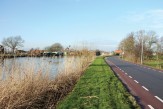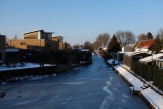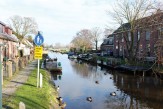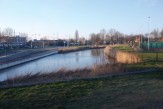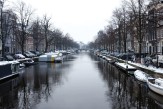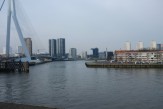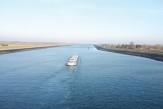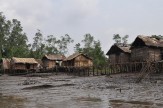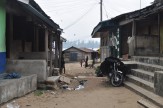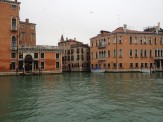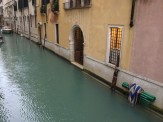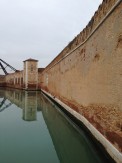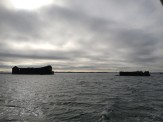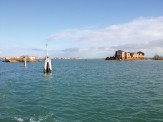2012–2013 Fellowship Recipients
Oliver Antoniu | Venice, Italy
Ezegbebe Imade Eribo | Bakassi Peninsula, Cameroon
Jeremy P. Jacinth | Rotterdam, The Netherlands
Theodore D. Kofman | Houston, TX
Projects
-
Teddy Kofman
-

Jeremy Jacinth
-

Eze Eribo
-
Oliver Antoniu
Back
Teddy Kofman
With the future expansion of urban centers around the world, my project hypothesis is that a new equilibrium between nature and human habitation must be achieved in order to adapt to a changing climate, environment and society. My thesis project proposes examining the possibility of reorganizing the urban form of Houston through the restoration of the prairie and the creation of a continuous urban forest. I intend that these two ecosystems will be integrated within the urban fabric and used as an environmental, social and architectural tool to create new spaces in the city and improve existing ones, both private and public.
I chose the city of Houston, Texas, as it has one of the harshest climactic environments in the country and yet one of the largest growth expectancies in the US. As a major Sunbelt city, located on the Gulf of Mexico, Houston suffers from high temperatures most of the year, constant flooding, hurricanes and extreme air pollution. It is also the only major city in the US that has not instituted zoning laws. With no limitations of this nature, Houston's forceful economy and dependency on vehicular travel have shaped its urbanity, giving preference to commercial spaces and highways over public spaces and pedestrian pathways.
In an attempt to study Houston in the most intimate scale, I tried to construct a daily routine that enabled me to become immersed in the city. Among other tasks, such as grocery shopping and filling gas, this routine included daily site visits and interviews with local professionals from different fields. Through photography I documented the physical relationship between the different components of the city such as roads, streets, parks and buildings of different types and programmatic uses. Understanding these components and the way they relate to one another was a means of exploring how they form the city, and by this understanding I identified the procedures and locations for my intervention.
The nine interviews I conducted with architects, academics, planners and environmentalists had a large influence on the research and design proposal. Each of the interviewees, from the perspective of their respective profession, broadened my view and understanding of the sociological, urban, economic and legal aspects of the ways in which the city is operating at the moment – and how they might be developed in the future.
While conducting active research and gathering information, the most fascinating discovery for me was experiencing the culture and city life of Houston, and realizing the direct relationship it has with the form and grain of the city. Through my different explorations and conversations with locals, I found cultural centers, cityscapes and trends that revealed to me the city life that was hidden from the maps and reports I had been reading. Moreover, I was able to experience some of those discoveries in the parks, museums and streets of Houston. These experiences helped me to thread the pieces of information I had been gathering into a complete story. From this I was able to start drawing conclusions and forming my own idea of Houston, ultimately allowing me to form a design approach that addresses the most meaningful issues of the place.
Jeremy Jacinth
I began my thesis project by thinking about the issue of water distribution in California; through this investigation I realized the importance of the Sacramento-San Joaquin Delta to California’s struggling water infrastructure. Through my research, I began to grasp the sensitivity of this ecosystem, specifically looking at it from its time as a marshland to its conversion to an agrarian landscape and now a vital means of water export for 96% of all Californians. During my initial study I realized that the Dutch have faced very similar issues, the only difference being that they were much further along in terms of mitigating disaster, and are now the most referenced example for water management infrastructure. It is for this reason that I proposed to travel to the Netherlands, specifically Rotterdam – a major port city – to immerse myself within a delta culture where the issues of flooding, subsidence and brackish waters are common knowledge and the infrastructural systems play out as active cultural monuments within the landscape.
I traveled to The Netherlands in order to obtain a better understanding of a way that a landscape completely below sea level deals with the issues of water management, as well as urban and rural inhabitation. The majority of my trip was spent riding a bike through the countryside and documenting the everyday life of its inhabitants. I also took the opportunity to visit exhibitions that discussed the Dutch relationship between water and the landscape. The observations gained during this trip have become an integral part of my Thesis project. Through conversations with author and architecture critic Tracy Metz and others, I was able to gain a new understanding that pushes for systems that are passive and dynamic, rather than rigid and static, in managing landscapes.
Eze Eribo
How do you speak of political oppression when you’re not allowed to speak of politics? How can you lend your voice, when that very act could cause your demise? Oftentimes, the problem of addressing the larger issue lies in the fact that foreign means or (mis)conceptions are employed to solve local problems. Such was the case during my travel to the Bakassi Peninsula, a disputed 665km 2 piece of land surrounded mostly by water, between Nigeria and Cameroon, whose inhabitants have witnessed identity loss, displacement, loss of territory, death of the Bakassi natives, maltreatment, restrictions, and unmentionable states of violence and terror.
I arrived at the height of the annual carnival, on December 28, a public holiday. The festivities in Calabar have become a celebration of the central core of the peoples’ belief systems and systems of order. Their main masquerade, known as the Epke Masquerade, dates back to pre-colonial times is considered their highest form of government, despite the presence of political and judiciary institutions. An integral part of my thesis is the rewriting of conflicts into myths, tales, and adages. These are not just pieces of entertainment, but codex’s on ways of life, lessons on being, and markers of shared communal knowledge. My project engages the old and the inherent expressions of self, as foundations for the new.
I met with my contact, Mr. Paul Umoh, a businessman and lively Calabar native, and through him I was fortunate enough to meet with Chief Ene Cobham, a prince from the Ikang area, who is also a historian, educationalist, and lawyer. He granted me an interview on the subject of the detailed history of Bakassi; the culture, political conflicts, and other topics of interest. He also introduced me to other Chiefs including his brother, Eyo Cobham, who eventually became my guide while traveling within the Bakassi Local Government Area (about an hour drive from Calabar). The market areas really tell the tale of the occupation of these people. By virtue of its close proximity to the water, the sole means of livelihood in Bakassi is fishing, with a coastal diversity unseen in many other parts of the world. The market attracts myriads of people from across Nigeria, as well as greater Africa, and the realization of the importance of the maintenance of this economy, even within a conflict, became apparent.
My most beautiful discovery was to find the people so welcoming, creative, and determined. Even in the midst of their conflict and identity loss, there was an intuitive sense of strength and awareness that radiated through. The depth of their hospitality was humbling, even while threatened with displacements from their own homes and ancestral lands. The biggest lesson learnt was my own undoing; I thought I was going to find a people traumatized and at their wits end. Instead, I found a people, though at the cusp of continual instability, still finding roots deep enough to mandate their permanence through self and livelihood, and whatever small hope lay in routine and mundane tasks. Of course the conflict is real and almost overwhelming, but yet they’ve chosen their own way of carrying it; standing bravely, like stilts on water.
Oliver Antoniu
I stayed for nearly two weeks in Venice, Italy, traveling through the city and the lagoon in an inflatable kayak, in which I could move freely through high and low tides, day and night, the lagoon and the open sea, and various abandoned islands. The city also hosted many opportunities for research, particularly the Museum of Naval History and the Biblioteca Marciana. A naval bookstore I discovered early on in the trip became ‘home base,’ the owner frequently advising me throughout my stay.
A number of architectural revelations crucial to the reframing of my project were documented through photography, video, and drawing:
- Structures and landforms can assemble/disassemble the horizon. On grey days the sky and sea bend in continuum, erasing it.
- Tidal currents, asynchronous with the solar day, provide a pendular rhythm and directionality of movement within the city. Waves provide a truly topological spatial medium in aural, visual, and kinetic terms.
- The high tide fills and floats the city; massless, it reads in terms of surfaces. The low tide reveals a continuous ‘base’ element which structures sit on, rather than floating against the water. This allows the city to become readable in terms of mass.
- Algal vegetation that grows on surfaces exposed to water emphasizes this base. The color and density of the vegetation varies due to the amount of time it is exposed to air and sunlight or submerged underwater. This allows an observer to read the behavior of the tides outside the temporal realm.
- Between low and high tide, elements such as stairs, ledges, walls, etc. measure the datum of the water and merge into one another. Certain spaces and passages become accessible or inaccessible depending on the tide. The ground of the city is this indeterminate zone between high and low tides.
What has always been of key importance to my thesis is the way that edges between land and water are articulated. Being able to observe this site first-hand has supplemented large-scale geological phenomena, swathes of history, suppositions of science, and telescopic hunches with an architectural repertoire of parameters. These parameters were used to relate my utopian project with the spatial medium of water, the tide mediating between the two.




